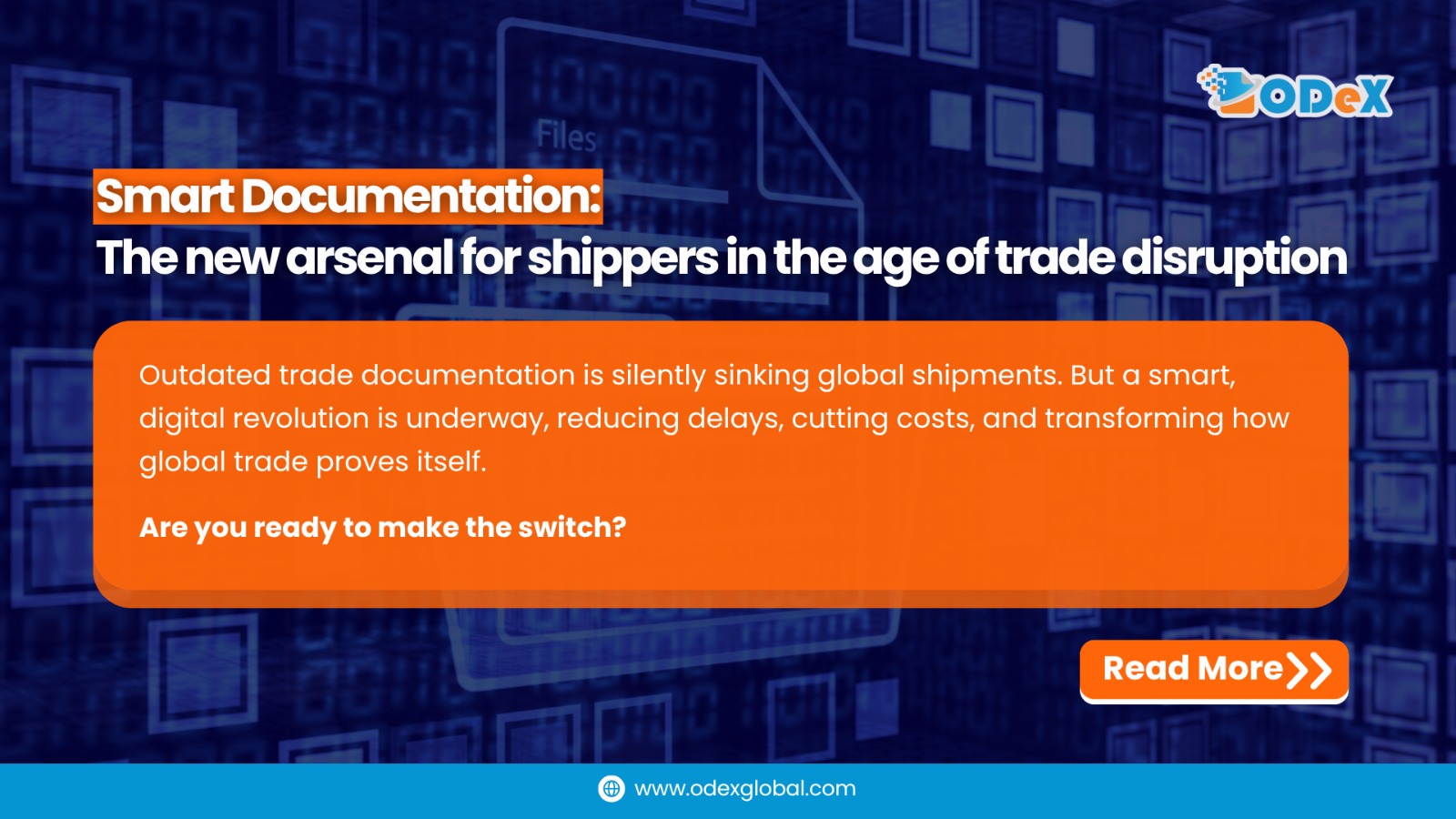Smart Documentation: The new arsenal for shippers in the age of trade disruption
For all the talk about vessels, visibility, and volatility, there’s one less glamorous—but absolutely critical—element in global trade that continues to make or break shipments: documentation.
Despite advances in cargo tracking and AI-assisted route optimisation, many shippers still rely on outdated processes for trade paperwork.
Errors in bills of lading, delayed document exchanges, and mismatched data entries are costing companies millions in demurrage, delivery delays, and even cargo holds.
But the winds are shifting.
Enter the era of smart documentation—an approach that blends standardisation, digital workflows, and real-time verification to create a more intelligent document ecosystem.
It’s not just about digitising paper. It’s about transforming how documentation is created, validated, transmitted, and stored.
At the heart of this transformation are platforms like ODeX and their push toward synchronising trade documents with port authorities, banks, and carriers.
Smart documentation also addresses the “people problem.” Manual document handling is time-consuming and error-prone, especially in high-volume environments where even small mistakes can snowball into big disruptions.
By automating redundant steps—like checking dates, party names, port codes, and cargo descriptions—smart systems free up teams to focus on exceptions, not routine.
But documentation is more than just an operational burden—it’s also a legal and commercial instrument.
Bills of lading, letters of credit, certificates of origin, and inspection reports all carry weight in dispute resolution, cargo ownership, and trade finance.
When these are mismanaged or delayed, it’s not just the cargo that’s at risk—it’s the entire transaction.
The global push toward MLETR (Model Law on Electronic Transferable Records), championed by UNCITRAL, is accelerating the shift.
Countries like the UK, Singapore, and Bahrain have already passed legislation recognising the legal equivalence of electronic records. This means electronic bills of lading (eBLs) and related smart documents are not only practical—they’re enforceable.
A digital document now holds the same legal strength as its paper counterpart, provided it meets authenticity, integrity, and control criteria.
So where does this leave traditional shippers, freight forwarders, and NVOCCs? In need of a strategy shift.
Firms that continue to rely on PDF attachments, email threads, or even fax machines are exposing themselves to growing risk.
They not only face delays and higher costs but also fail to meet the expectations of digitally mature trading partners. Smart documentation is no longer a nice-to-have—it’s becoming a competitive necessity.
The benefits extend far beyond efficiency. Digitally intelligent documents integrate with supply chain management systems, enabling predictive insights.
For instance, if a document delay is detected upstream, the system can trigger alerts or reroute workflows to avoid detention charges.
Similarly, automated reconciliation between physical flows and digital records can flag mismatches in quantity, value, or routing before a customs authority does.
The environmental argument is also compelling. Paper-intensive processes not only strain resources but contribute to unnecessary emissions and inefficiencies across the supply chain.
By digitising documentation workflows Platforms like ODeX are helping shippers reduce paper usage, accelerate transaction times, and streamline process integrity—delivering both operational efficiency and environmental benefits.
These support broader sustainability goals by embedding smarter, paperless processes into day-to-day trade operations.
What about adoption hurdles? Many companies fear change due to legacy systems, limited IT support, or perceived legal grey areas.
However, the emergence of interoperable networks—such as FIT Alliance and DCSA-led initiatives—means that platforms can now “talk” to each other using common standards.
You no longer need to be on the same platform as your counterparty to exchange a verified document. That’s a game-changer.
Another key consideration is finance. Smart documents facilitate faster payments. Trade finance institutions, insurers, and customs brokers are far more comfortable funding or clearing a shipment backed by validated, timestamped documents. When trust is digital and automated, liquidity flows faster.
Looking ahead, we’re likely to see even greater integration. Smart contracts may soon auto-execute based on verified documents.
Regulatory filings may be triggered the moment goods are loaded. AI tools could continuously monitor for anomalies or missing signatures and suggest proactive corrections. The convergence of smart documentation with visibility platforms and digital identity systems will ultimately create a self-validating supply chain.
In conclusion, the age of smart documentation is here—and it’s redefining the battleground for operational excellence.
Shippers who act now will be better positioned to face trade disruptions, compliance shifts, and competitive pressures. Because in global logistics, it’s not just about where your cargo is—it’s also about what you can prove, and how fast.


















